
All categories
Featured selections
Trade Assurance
Buyer Central
Help Center
Get the app
Become a supplier

(2351 products available)



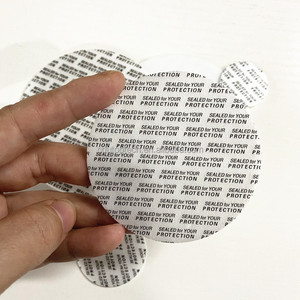

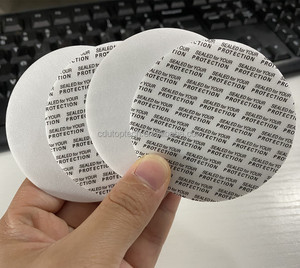







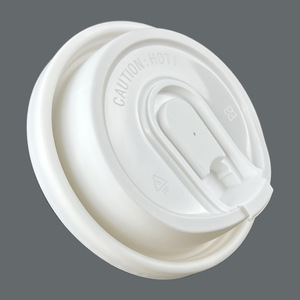
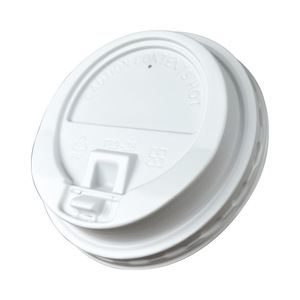

















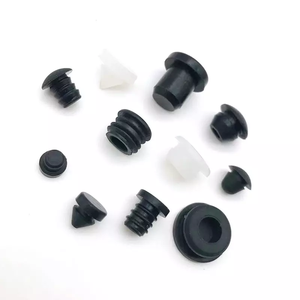




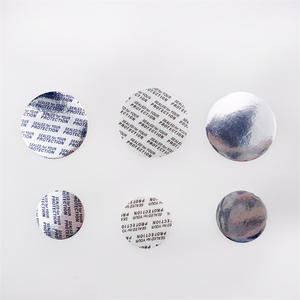









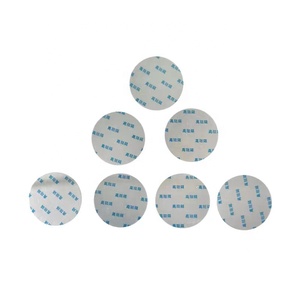




The plastic bottle cap PE gasket utilizes diverse materials. They include:
Polyethylene, also known as PE, is the predominant material in plastic bottle cap gaskets. This is due to its flexibility, durability, and resistance to moisture and chemicals. Usually, it is constructed from low-density polyethylene (LDPE) or high-density polyethylene (HDPE). This provides an effective sealing that ensures bottles remain airtight and prevent leaks.
Polypropylene (PP) is largely used to manufacture bottle caps and gaskets. Normally, it is preferred due to its rigidity, chemical resistance, and ability to withstand multiple cycles of opening and closing without wear. Often, the gaskets made from polypropylene provide a reliable seal for a wide range of solvents and chemicals.
Rubber compounds are constructed into PE gaskets to enhance their sealing abilities. Usually, the elasticity and compressibility of rubber allow the gasket to conform to the bottle’s neck. This provides a tight seal. Often, rubber gaskets are used in applications where the bottle is periodically exposed to varying temperatures.
Foamed plastics, like polyethylene foam or EVA foam, are utilized in PE gaskets requiring extra cushioning. Normally, the foam also provides insulation. Therefore, it is ideal for products sensitive to pressure changes or extreme temperatures. Also, the lightweight nature of foamed plastics helps to minimize the overall weight of the packaging.
Often, Thermoplastic elastomers (TPEs) combine the beneficial features of rubber and plastics. This makes them ideal for sealing applications. Commonly, TPEs are engineered into flexible and durable gaskets that maintain their shape and sealing properties over time. This is despite exposure to varying environmental factors.
In recent times, bioplastics are emerging as an alternative for polyethylene sourced from renewable resources. Often, these materials provide comparable performance and are amenable to more sustainable practices. In addition, they are increasingly used in bottling situations where consumers prioritize environmentally responsible packaging.
A bottle cap PE gasket has heterogeneous uses. They include:
Essentially, one of the primary functions of a polyethylene bottle cap is to create airtight seals on containers. Normally, this is particularly important for liquid products like beverages, oils, and syrups. Also, it prevents the contamination of the product by bacteria and other harmful microorganisms. In addition, an airtight seal prolongs the shelf life by inhibiting oxidation, which may lead to spoilage.
A PE foam gasket enables the bottle cap to achieve a tight fit on the bottle’s neck. This tight fit goes a long way to minimize leaks during storage and transportation. Also, it is particularly valuable for products with a thin consistency that makes them prone to spilling. They include sauces and detergents. Apart from that, the preventive leaks ensure customers receive products in the right condition, enhancing brand reliability.
Usually, in some applications, the PE gasket acts as a cushion between the cap and the container. Ideally, this is critical in settings where the containers are subject to constant shaking or movement. Therefore, by absorbing vibrations, the gaskets protect sensitive products like pharmaceuticals and cosmetic emulsions from separation or deterioration.
Usually, during transportation and storage, bottles may be subjected to varying pressures. Often, a PE gasket helps moderate these pressure fluctuations. Ideally, this is especially important in products like carbonated beverages. Here, the gas buildup may cause cap failure or foaming. Commonly, the ability to regulate pressure ensures consistency to the product and retains its quality.
Commonly, PE gaskets are compatible with various container materials. Such materials include glass, plastic, and metal. This compatibility makes them versatile. Also, they are adaptable to a wide range of industries. Usually, their adaptability makes PE gaskets a go-to solution for manufacturers in search of a single sealing system for diverse packaging.
Plastic bottle cap PE gaskets come with a myriad of customization options. They include:
Often, bottle cap gaskets are typically manufactured in contrasting colors. Normally, this helps in product identification and brand aesthetics. Also, customizable colors allow for the alignment of the gasket with the branding of a company. This is regardless of whether it is a standard retail product or a unique, customized container.
Usually, the thickness and size of plastic bottle cap gaskets can be tailored to fit specific sealing requirements. Normally, adjusting the thickness aids in altering the compression and sealing force. Therefore, this accommodates divergent volume and headspace variations. Thus, customizing sizes ensures that the gasket provides a perfect seal. Aiding in this is precise size which minimizes product leakage while maximally utilizing sealing potential.
Diversity in foam density offers a range of cushioning and sealing effects. Therefore, a higher density provides a tighter seal with greater resistance to pressure variations. On the other hand, lower density offers more flexibility. Usually, this makes it suitable for products requiring slow release.
Pursuant to multi-layer gaskets, they allow for the combination of contrasting materials. Usually, this enhances functionalities. Besides, layers can be customized to incorporate features such as tamper-evident, retention, and extended shelf life. Most importantly, they are suitable for products with distinct requirements.
Standardly, the inner diameter (ID) of a gasket is adapted to fit accurately onto the container’s neck. This is regardless of whether it accommodates standard bottle openings or specialized formats. Therefore, specialized ID adjustments ensure that the gasket maintains alignment with the cap to ensure proper sealing.
The most recent trend involves custom printing on gaskets. Often, they include brand logos and product information. This improves aesthetic value while providing useful information to the consumers. Therefore, it comes as no surprise that businesses are constantly leaning toward personalized printing to enhance marketing.
When purchasing plastic bottle cap PE gaskets, business owners ought to consider various factors. Here are some of them:
Business owners should firstly ensure that the plastic bottle capgasket is made of high-quality materials. Manufacturers usually make these gaskets from polyethylene. This material is durable, flexible, and resistant to chemicals. Additionally, they should consider the material's ability to withstand extreme temperatures and stress. Such factors are likely to affect the gaskets in any way.
Business owners should look for gaskets that provide effective sealing. In this case, they should choose PE gaskets that prevent leaks and air exposure. Such options ensure bottle integrity is maintained and that the products stored in the bottles remain fresh for extended periods.
Depending on the variety of bottled products, business owners should look for customizable gaskets. Such options allow them to get gaskets in various colors, sizes, and thicknesses to match the bottlenecks. Also, the gaskets' inner diameters should be compatible with the neck diameters of the intended bottles to ensure proper seating.
When purchasing bottle caps withpe gaskets, business owners should consider their durability. In this case, they should choose options that retain effectiveness and appearance, even with prolonged exposure to sunlight. More importantly, they should settle for lightweight yet strong gaskets capable of withstanding multiple openings and closings without degradation. Such factors come into play in ensuring that the gaskets remain effective and appealing even in options with prolonged exposure to sunlight.
Business owners should look for gaskets that meet safety regulations. Ideally, gaskets for food products should comply with FDA specifications. Also, gaskets free from harmful chemicals like phthalates and heavy metals are suitable for ensuring food safety. In such cases, business owners should request certificates of compliance from manufacturers.
Inners cannot extend the lifespan of plastic bottle cap PE gaskets through maintenance since there are none. Instead, they should focus on the proper disposal of recycled PE bottle cap gaskets to promote environmental sustainability.
The common factors that affect the lifespan of plastic bottle cap PE gaskets include exposure to UV radiation, temperature fluctuations, and prolonged contact with certain liquids. All the factors cause materials to degrade. For instance, continuous exposure to UV rays lowers the material's strength and flexibility. Also, constant contact with chemicals may lead to warping or tearing. Fortunately, manufacturers can mitigate such contaminants by using UV-resistant materials and chemical barriers.
Yes. Recyclable plastic bottle cap PE gaskets have environmental benefits. They reduce waste and lessen the demand for virgin plastics. Usually, these gaskets are manufactured from polyethylene, which is widely recyclable. Often, they are collected and processed into new plastic products. This minimizes the overall environmental impact. Moreover, they provide an eco-friendly alternative for conscientious consumers.
Yes. There are numerous innovations in the plastic bottle cap PE gaskets industry. For starters, many manufacturers are incorporating biodegradable polymers into their gaskets. Also, they are collaborating with material scientists to develop eco-friendly alternatives. Just like the biodegradable polymers that offer a comparable lifespan while decreasing plastic pollution, tightly recycled PE gaskets can be manufactured.